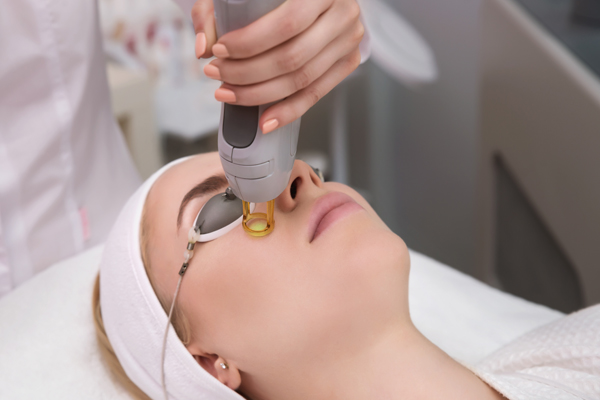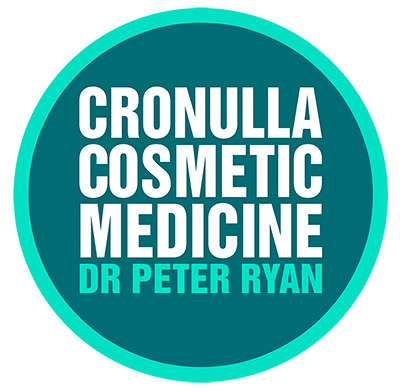Advice

LASER TERMINOLOGY, WHAT DOES THAT ACTUALLY MEAN?
When treating skin concerns with laser there are a number of key factors you may find interesting to understand.
Lasers use intense light and heat to improve skin tone, texture, and colour. The intensity of the heat and light creates a controlled injury in skin tissue and the body subsequently stimulates a healing response, to make it better.
Wavelengths and Chromophores (Melanin, Haemoglobin and Water)
Light travels in waves, and the distance between the peaks of a wave is called the wavelength. Each colour of light has a different wavelength. Lasers produce a narrow beam of light in which all of the light waves have very similar wavelengths. Laser beams are focused and can concentrate a lot of energy on a very small area.
Lasers beams are attracted to certain colours or chromophore. A chromophore is the part of a molecule responsible for its colour. Skin chromophore are melanin (dark pigment), haemoglobin (redness in blood vessels) or water. When the light is delivered to the chromophore it destroys it.
So in the simplest of terms, a laser treats the skin by destroying the targeted impurity, be it pigment, blood vessels or water.
Different depths of the chromophore determine what laser wavelength is best to destroy it.
Melanin
Melanin (the coloured pigment in skin) is absorbed between wavelengths of 500nm to 1064nm but the depth depends on the location of the pigmentation. Pigment can be deep in the dermis like hormonal melasma, or superficial in the epidermis like in sun damaged skin; or a bit of both. Melanin is also found within hair follicles which is deep in the skin, therefore hair removal lasers need to go deep with a longer wavelength.
Haemoglobin
Haemoglobin is found within blood vessels and gives the blood its red colour. Lasers that target haemoglobin are used to treat capillaries, broken blood vessels, rosacea and red scars. Haemoglobin is best absorbed at a shorter wavelength, but again different depths are often needed as some blood vessels lay deeper than others.
Water
Water is best absorbed by longer wavelengths but sits at all levels in the skin (over 80% of our skin is water). Water is the target of ‘ablative’ lasers, that is those lasers that work to resurface the skin and treat conditions such as scarring, wrinkles and texture. Long wavelength lasers can be controlled to penetrate to different depths for different results while still targeting water.
Tattoos
The pigment in tattoos also work as chromophores. Red ink, blue ink, green ink etc are all targets of certain laser wavelengths. The difference with tattoo removal is that the lasers must be very powerful and emit very short pulses of energy to mechanically break up the tattoo pigments.
Ablative Lasers and Non-Ablative Lasers
Ablative lasers work to remove the epidermis (top layers of skin) and part of your dermis (the second layer of your skin) by superheating water in the skin. This causes “controlled vaporization” of skin cells, and the body responds by making new, younger-looking skin.
These are resurfacing lasers (Fractional Co2 lasers) which treat sun damaged skin with deep lines and wrinkles; early skin cancers; scarring, textural changes and result in collagen and elastin remodelling.
After treatment skin gets tighter, fine lines and wrinkles are softened; sunspots are lightened, and benign skin growths are destroyed. There may be some down time for recovery with ablative lasers, depending on the settings used and the depth of the photo damage. In general, recovery is about a week or 2, with continued improvement over six months.
Non-ablative lasers do not remove any skin. They work to heat the skin below, treat particular skin conditions such as vessels and pigment and stimulate collagen production.
Non-ablative laser treatments generally have little to no down time.
Skin Tone and Reaction
Not all skin colours react to lasers the same way. The Fitzpatrick scale, a system of classifying human skin colour, estimates the response of different types of skin to ultraviolet (UV) light. 1 being the lightest and 6 having the most melanin.
A conservative approach is best, especially with Fitzpatrick 4, 5 and 6 tones. Lasers can pose a higher risk for discolouration known as hyperpigmentation in darker skin, creating more blotchiness or darkness or brown spots on their skin.
ANY QUESTIONS? WANT TO BOOK A CONSULTATION?
Whether you’re ready to get started or simply have some questions at this point, your first step is scheduling an initial consultation with us.
We are ready to help at any time, so contact us today to schedule your consultation.
Latest Post
- TREATING REDNESS, ROSCACEA & CHERRY ANGIOMAS
- MELASMA TREATMENTS
- NON-SURGICAL FACE LIFT
- LASER TERMINOLOGY, WHAT DOES THAT ACTUALLY MEAN?
- LASERS, SO WHAT DO THEY DO?
- LASER HAIR REMOVAL
- EYE AREA REJUVENATION
- DERMAPLANING + LACTIC PEEL
- FRACTIONAL CO2 LASER SKIN RESURFACING
- PEELS, SO WHAT DO THEY DO?
